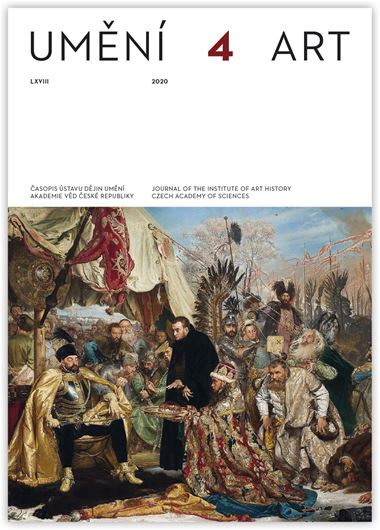Markéta Svobodová
New Stimuli for Optophonetic Works: Reflections of Science in the Theoretical Texts of the Architect František Kalivoda
In 2019, MIT Press published the book Dimensionism: Modern Art in the Age of Einstein, comprising texts bya collective of authors, to accompany the eponymous exhibition organised by the Mead Art Museum and the Massachusetts Institute of Technology. The exhibition was an attempt to explore the ways in which modern art has been influenced by scientific advances. The main concept was based on the analysis and reflections contained in The Dimensionist Manifesto published in Paris in 1936 by the Hungarian poet Károly Tamkó Sirató (1905–1980), who, for a while, successfully brought together some surrealist authors and artists with members of the recently dissolved Abstraction-Création group. Sirató and his colleagues believed that corresponding advances in perception should take place on the basis of reflections about Einstein’s theory and Minkowski’s formulation of space-time. Although the term ‘dimensionism’ never appears directly in František Kalivoda’s texts, it is still possible to consider this architect and journalist from Brno as one of the very few individuals in inter-war Czechoslovakia who had close links to Sirató’s manifesto, just on the basis of Kalivoda’s intensive contact with László Moholy-Nagy. The collection of Kalivoda’s extensive correspondence even includes a letter sent by Sirató himself, so there can be no doubt but that Sirató was familiar with Kalivoda’s concept. Although in the second half of the 1930s Kalivoda was extremely busy as the secretary of the Eastern Section of the International Congress of Modern Architecture (CIAM-Ost), in 1937 he published a noteworthy article in Výtvarná výchova (Art Education) magazine entitled ‘New Stimuli for Optophonetic Works’. In the title he used the term ‘optophonetics’, which was introduced in the artistic environment by the Austrian experimenter and ‘Dadasoph’ Raoul Hausmann. In 1937, Hausmann moved from Switzerland to Prague, and began to correspond regularly with Kalivoda. This article takes a look at their mutual contacts, and also examines the extent to which Hausmann’s ideas influenced the young František Kalivoda.
Full-text in the Digital Library of the Czech Academy of Sciences:
https://kramerius.lib.cas.cz/uuid/uuid:d0e5a765-8510-4d87-85ac-e70cd3b80d49
< back

